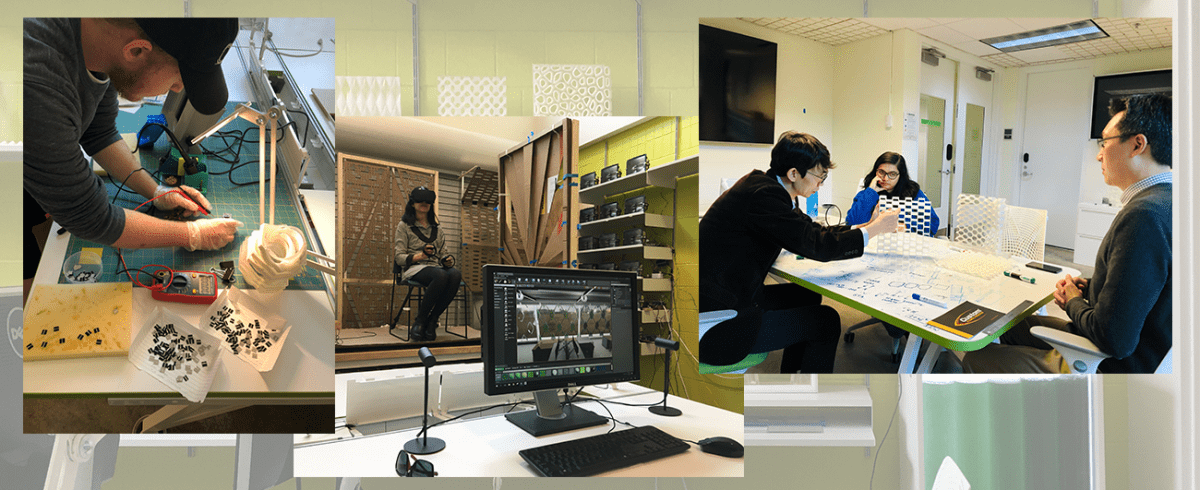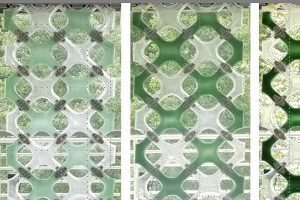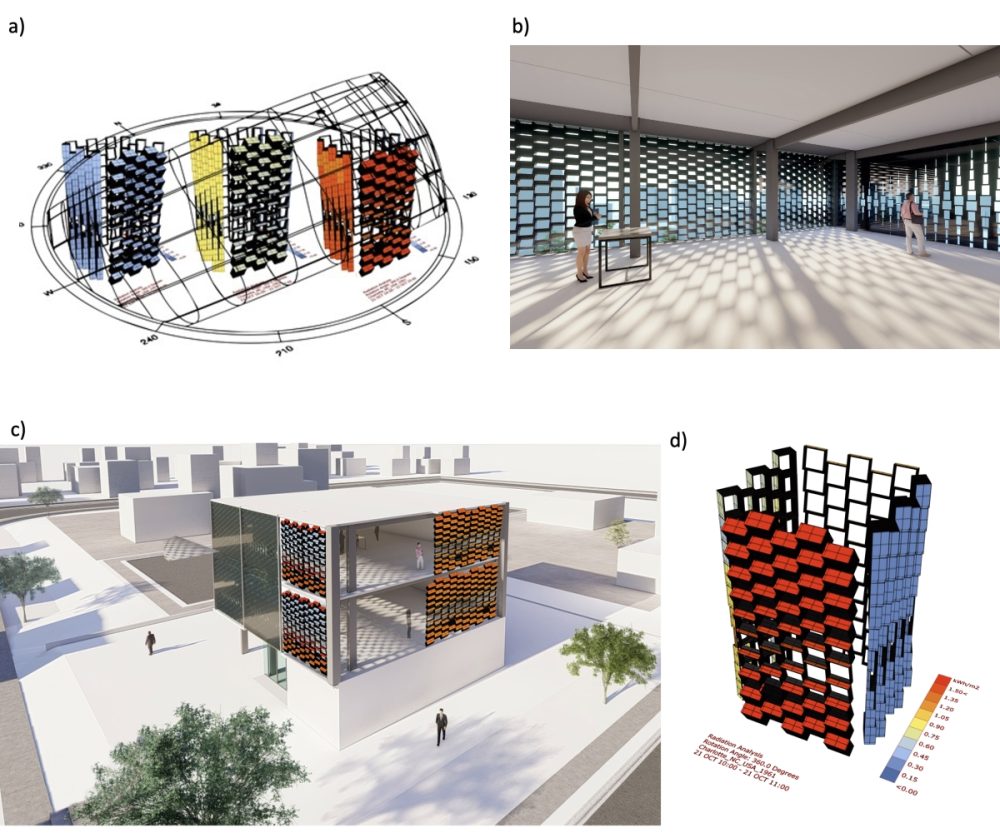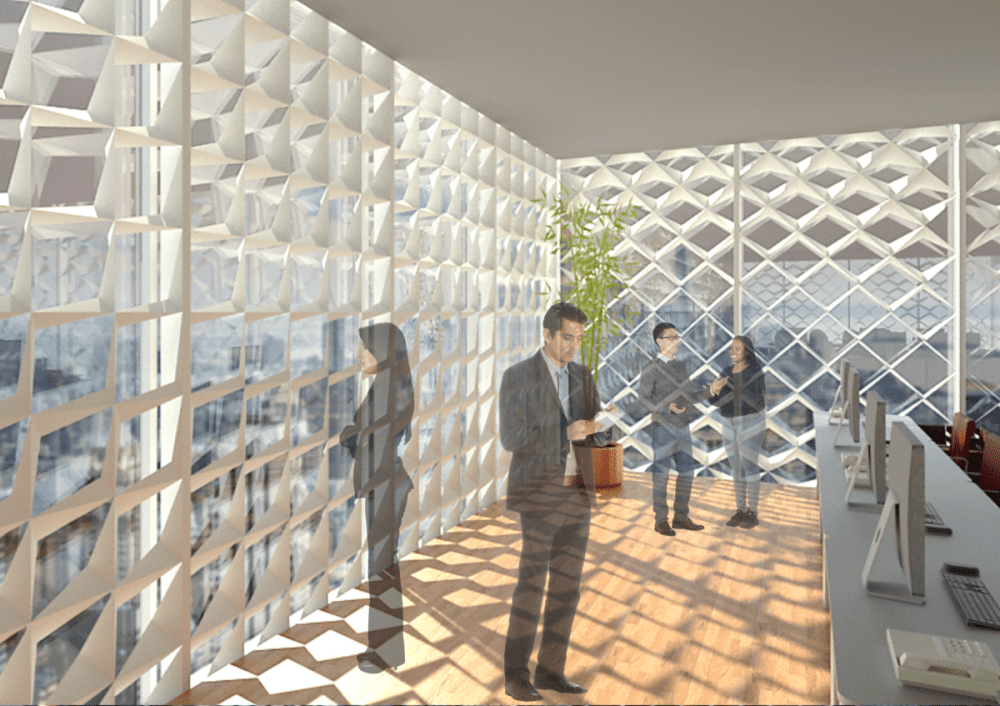MS in Design Science (M.S.)

The MS in Design Science (M.S.) is a graduate degree focusing on emerging research critical to the architectural profession, which requires expertise that exceeds current criteria for accredited professional degrees. This non-professional degree curriculum is made up of core requirements (research methods and interdisciplinary skills) and research-based concentration areas. Please follow the link for more information about the concentrations, the application process, and admission requirements on the graduate program information page.
Read more →
Project EXAMPLES

EFFECTIVE PARAMETERS ON THE PERFORMANCE OF
PHOTOVOLTAIC DOUBLE SKIN FACADE
contact: PARHAM KHEIRKHAH SANGDEH
email: pkheirk1@uncc.edu
The adoption of tiny houses, characterized by a footprint of less than 400 ft², emerges as a compelling alternative to conventional residences, offering solutions to enhance sustainability across social, economic, and environmental dimensions. A key feature of tiny houses is their reduced energy requirements, attributed to the minimized spatial footprint, resulting in lower energy consumption for heating and cooling processes. The primary objective of the project is to explore the potential of achieving zero-energy structures by manipulating various design elements, including orientation, window-to-wall ratio, material thickness, and the integration of photovoltaic panels. The project assesses the potential of different climate zones for achieving net-zero energy tiny houses, with emphasis placed on selecting the most densely populated city with the highest average house rent in each region. The findings aim to provide a guideline for architects and contractors in constructing net-zero energy dwellings. Moreover, the feasibility of constructing a net-zero energy tiny house can serve as motivation for individuals, driven by both economic and environmental considerations.
Read more →

INDOOR DAYLIGHT LEVEL ASSESSMENT OF A MICOR_ALGAE
INTEGRATED DOUBLE GLAZED FACADE SYSTEM
contact: SAEED REZAEE PARSA
email: arezaeep@uncc.edu
Lighting conditions have a significant impact on all aspects of human life and health. They affect our physiological and psychological health, and their dynamic changes have positive effects on several aspects of human well-being. Apart from the effects on human health and well-being, the lighting environment affects task performance. Previous research indicated that there is a positive correlation between daylighted classrooms and student learning rates. Therefore, along with energy efficiency practices, there is a need for a comprehensive understanding of the occupants’ needs and preferences as well as the factors influencing their performance in indoor environments, two topics that are not necessarily overlapping. Recently, investigating micro-algae integrated building facade systems has increased due to its environmentally friendly nature. This study measures the effect of density and green colour of a micro-algae glazing system on visible light transmittance (VLT) along with the quality of light inside a building.
Read more →

COMPUTATIONAL ANALYSIS OF POWER LOSS REDUCTION IN BIPV
SYSTEMS CONSIDERING PARTIAL SHADOW CONDITIONS
contact:HAMIDEH HOSSEI
email: shossei5@uncc.edu
Integrating photovoltaic (PV) panels into buildings as a source of clean energy has been a widely established method to achieve net-zero energy buildings. While rooftop installed PV panels have been extensively implemented, with more urban area development and population growth, the rooftop area of high-rises will not be sufficient to meet the whole building’s electricity demand. Therefore, rooftop-installed PV panels are not able to eliminate electricity consumption from the grid. The exterior envelope of the high-rise buildings can serve as the best place to integrate PV panels for utilizing solar energy. However, shadows casting on the building integrated PV panels (BIPV) façade are unavoidable as they are often subject to partial shades from panels self-shading and the building itself. Ununiform solar radiation on the PV surface causes a dramatic decrease in the current output of the circuit. In BIPV facades, the default circuit connection of manufactured PV panels does not output maximum power under partial shading conditions. This thesis, therefore, investigated the different BIPV’s array configurations and PV cell circuit connections to achieve higher energy yields while addressing design requirements in BIPV facade systems.
Read more →

A PHOTOCATALYTIC AIR CLEANING SYSTEM BREAKING DOWN VOLATILE ORGANIC COMPOUNDS TO IMPROVE HEALTH AND PRODUCTIVITY OF OCCUPANTS
contact: KETKI PARSHANT BAPAT
email: kbapat@uncc.edu
Volatile Organic Compounds (VOCs) are one of the pollutants that impact indoor air quality, leading to many adverse health effects such as Asthma, and other breathing issues. Most of the VOCs are harmful and carcinogenic, usually emitted by indoor sources like disinfectants, insecticides, and building materials including wall paint, varnishes, and many more. As human beings spend 90% of their time indoors, it is necessary to maintain good indoor air quality by reducing harmful VOCs. Photocatalysis is one way to remove the VOCs in the air. A photocatalytic compound TiO₂ is activated in presence of UV light and breaks down VOCs in the air. The more the surface area is covered with TiO₂ and in contact with sunlight, the more effective it removes VOCs. Building facade is one of the building elements that is in direct contact with sunlight and interior space. Therefore, it can serve as a prime location to implement TiO₂ photocatalytic facade and remove VOCs. The facade configuration studied in this paper was chosen as a tetrahedron geometry to increase more surface area for coating TiO₂ under a unit volume.
Read more →